The Ark of the Covenant in Japan: a report from Mount Tsurugi [Pt. 2]
![The Ark of the Covenant in Japan: a report from Mount Tsurugi [Pt. 2]](/content/images/size/w1200/2024/10/mount-tsurugi-2-1.png)
If you have been following our work, you already know that Gion festival, named after Zion, has annually been held on July 17th, the same day that Noah's Ark is said to have landed at Mountain Ararat after the floods and the day of Yeshua's ressurection, to commemorate the arduous journey of the Near Eastern tribes with a procession of 33 floats.
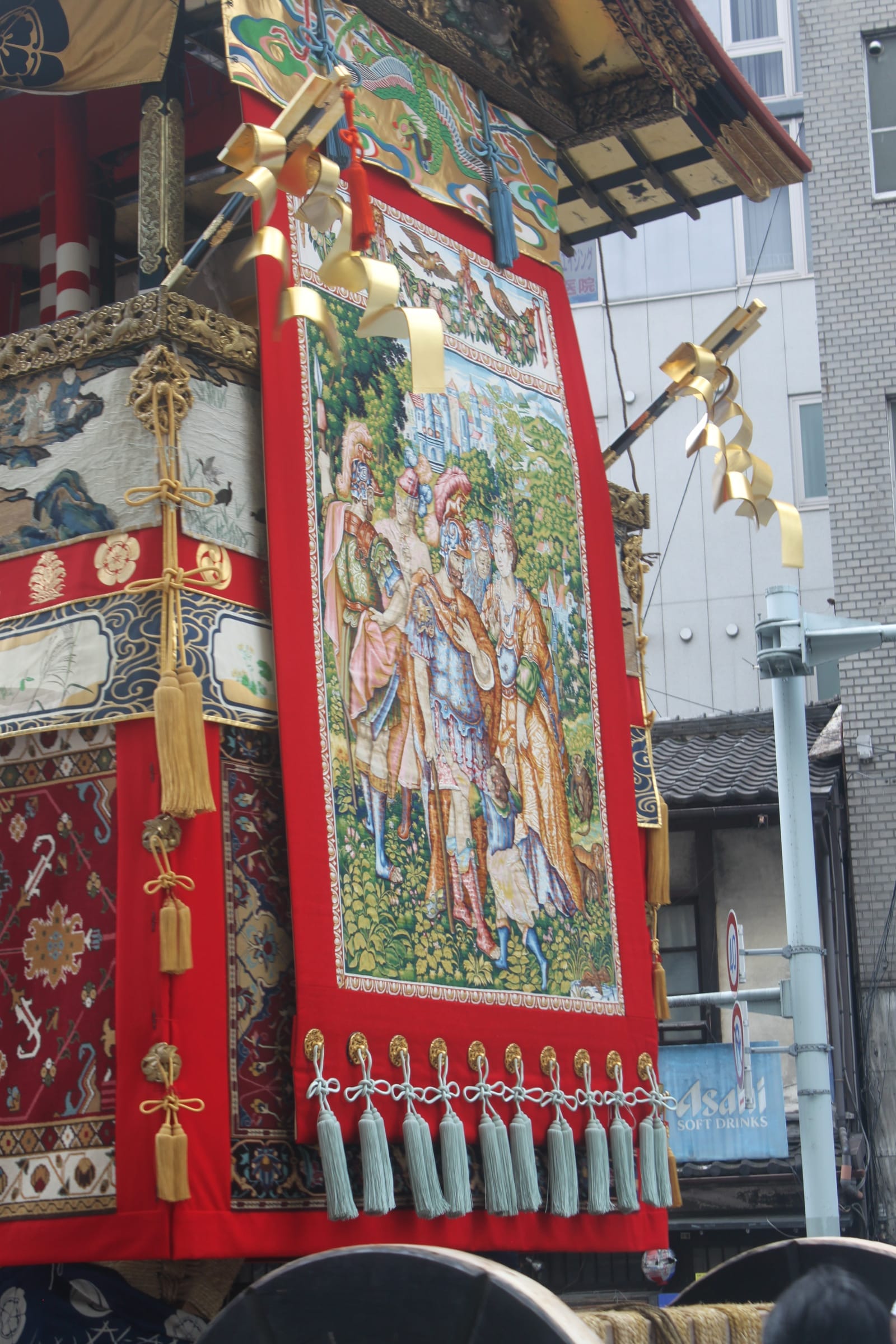
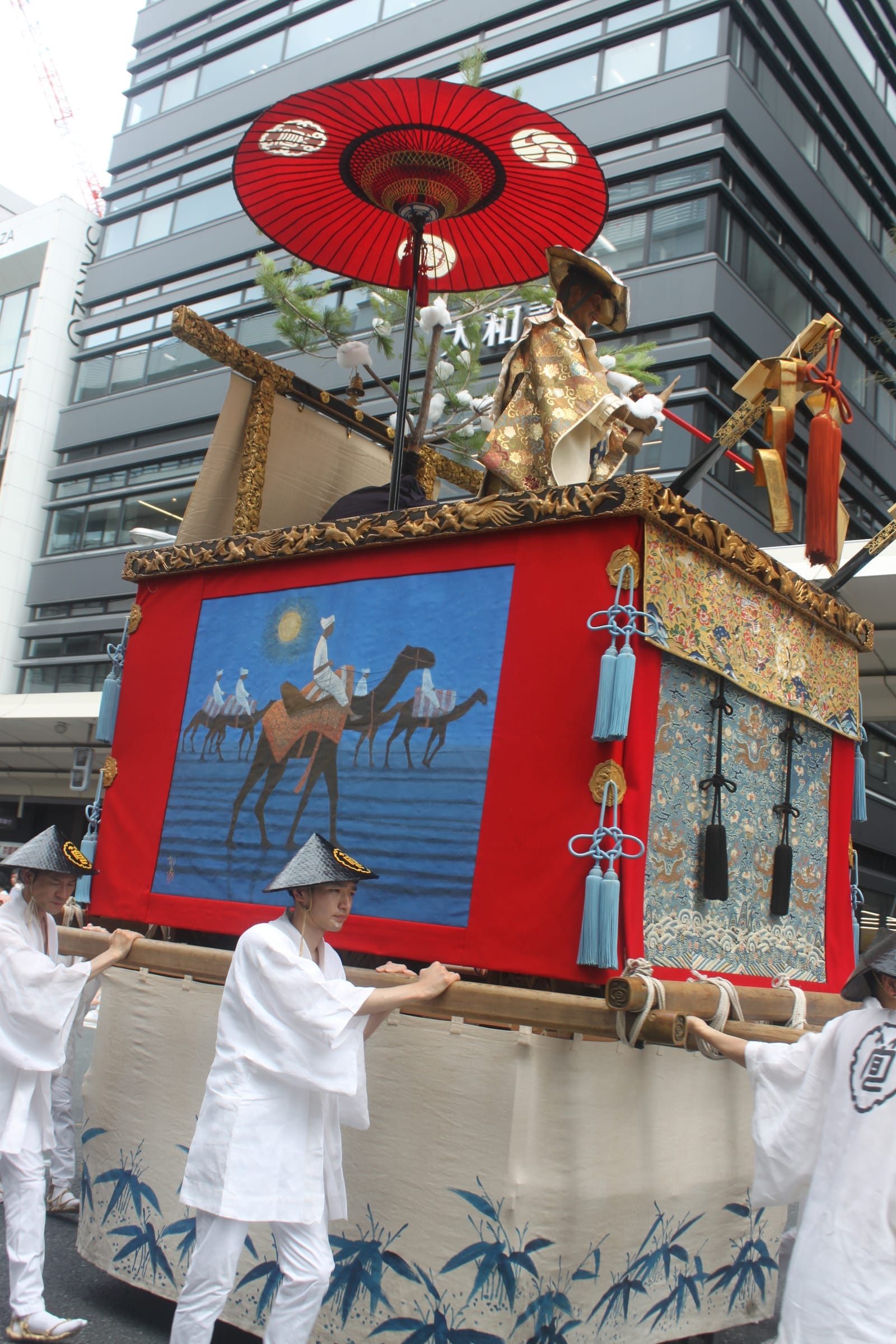
Peculiarly, that same day, there is also a festival held at Mount Tsurugi on Shikoku Island, the second tallest peak in all of West Japan, where a mikoshi chariot (神輿) is carried up to the top of the mountain, as if to mimic the very act of the Ark's landing.
This correlation has led many scholars and explorers, such as Masanori Takane (高根正教) and his son Kazunori Takane (高根三教), to theorize that the Ark of the Covenant had come to Japan, and had become the origins of the Japanese mikoshi, a ubiquitous feature of Shinto festivals all across Japan.

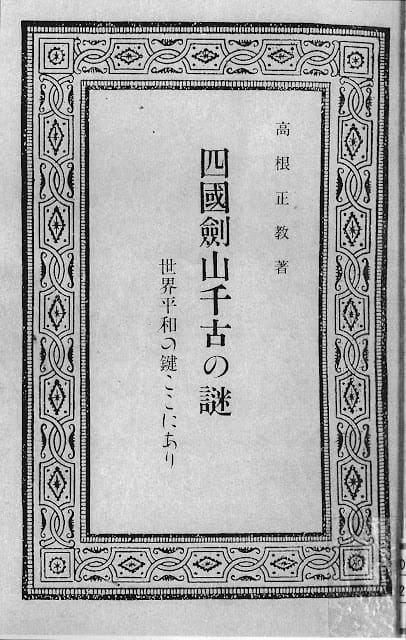
Similarly, there has been much speculation that the three Japanese imperial regalia, the Great Mirror (八咫鏡・Yata-no-kagami), the Grass-cutting Sword (草薙剣・Kusanagi-no-tsurugi), obtained by the storm Kami Susanoo-no-Mikoto by slaying the Yamata-no-orochi (八岐大蛇), and Great Fetus-like Jewel (八尺瓊勾玉・Yasakani-no-magatama), originated in the three treasures of King Solomon, the Ten Commandments, the Wand of Aaron, and Vessel of Manna that were said to have been carried inside the Ark of the Covenant.
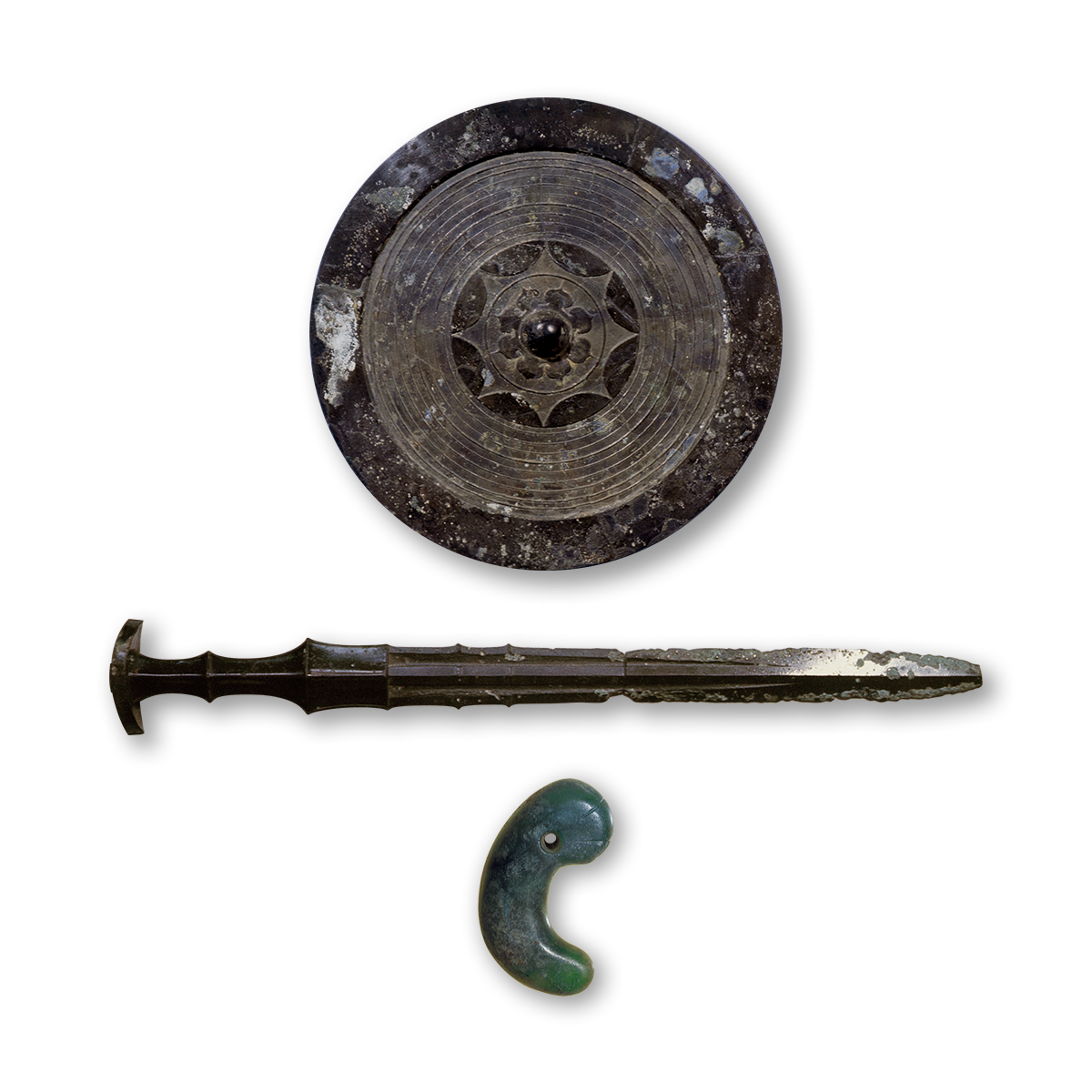
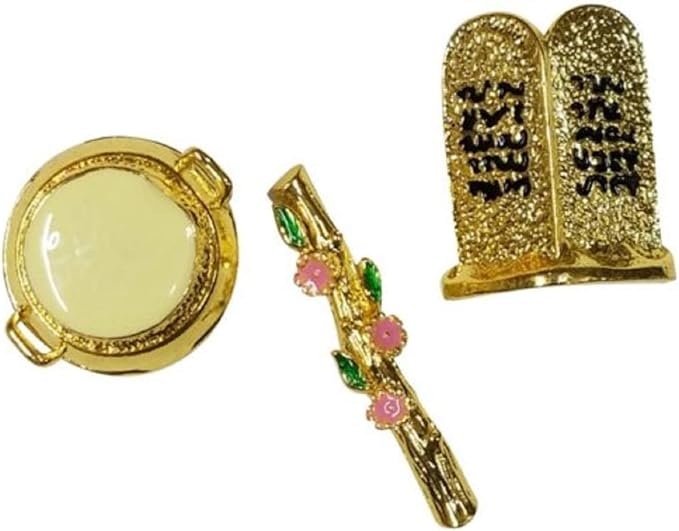
You may notice that all three of the Japanese regalia either contain or are associated with the Chinese character for 8 (八), pronounced Ya. Within the Japanese disclosure movement the frequent use of Ya in Japanese spirituality is etymologically associated with Yahweh. Further strengthening the case for a connection between the Japanese regalia and Ark of the Covenant is the fact that the numerological value of Jesus is 888, indicating the possibility the name of the three treasures have been purposely encoded to hide the secret Christian origins of the Japanese royal family.
Also, related to the use Ya in Japanese being connected to the ancient Hebrews, the region that is near the peak of Mount Tsurugi is named Iya (祖谷) and has a peculiar folk song called "The Song of Three Treasures (みたからの歌・Mitakara-no-uta)". Below is a google translation of the highly suggestive lyrics:
"Nine miles to go, nine miles to go, nine miles back
The morning sun shines, the evening sun shines
Illuminating the roots of the camellia
What came from the valley of Iya
Ebisu God Daikoku God, loaded and unloaded
The treasures of Ise [location of Japan's national grand shrine, Ise Jingu], loaded and unloaded
The three treasures are in the garden
Three dragon carriages descend from the sky of Iya
What was loaded on the first carriage
Ebisu Daikoku, loaded and unloaded, loaded and unloaded
Three dragon carriages descend from the sky of Iya
What was loaded on the middle carriage
The treasures of Ise, loaded and unloaded, loaded and unloaded
Three dragon carriages descend from the sky of Iya
What was loaded on the rear carriage
The treasures of various countries, loaded and unloaded, loaded and unloaded
The three treasures are piled up together
Loaded and unloaded in your garden, loaded and unloaded"
Another mystery of Shikoku famously linked to the legends of the Ark at Mount Tsurugi is the famous Shikoku Pilgrimage, a circuit of 88 temples founded by Kukai, the Legendary Tantric Buddhist monk.
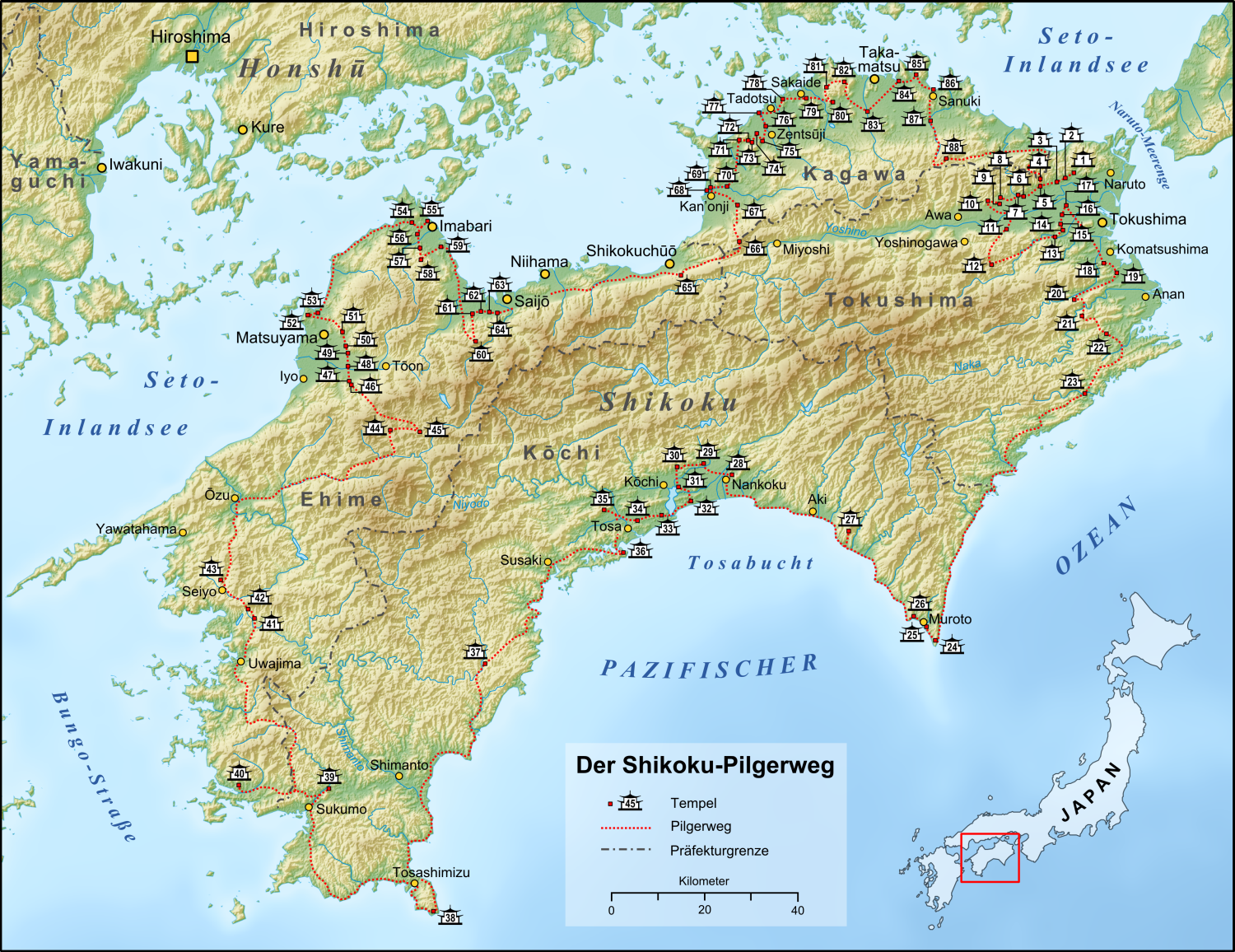
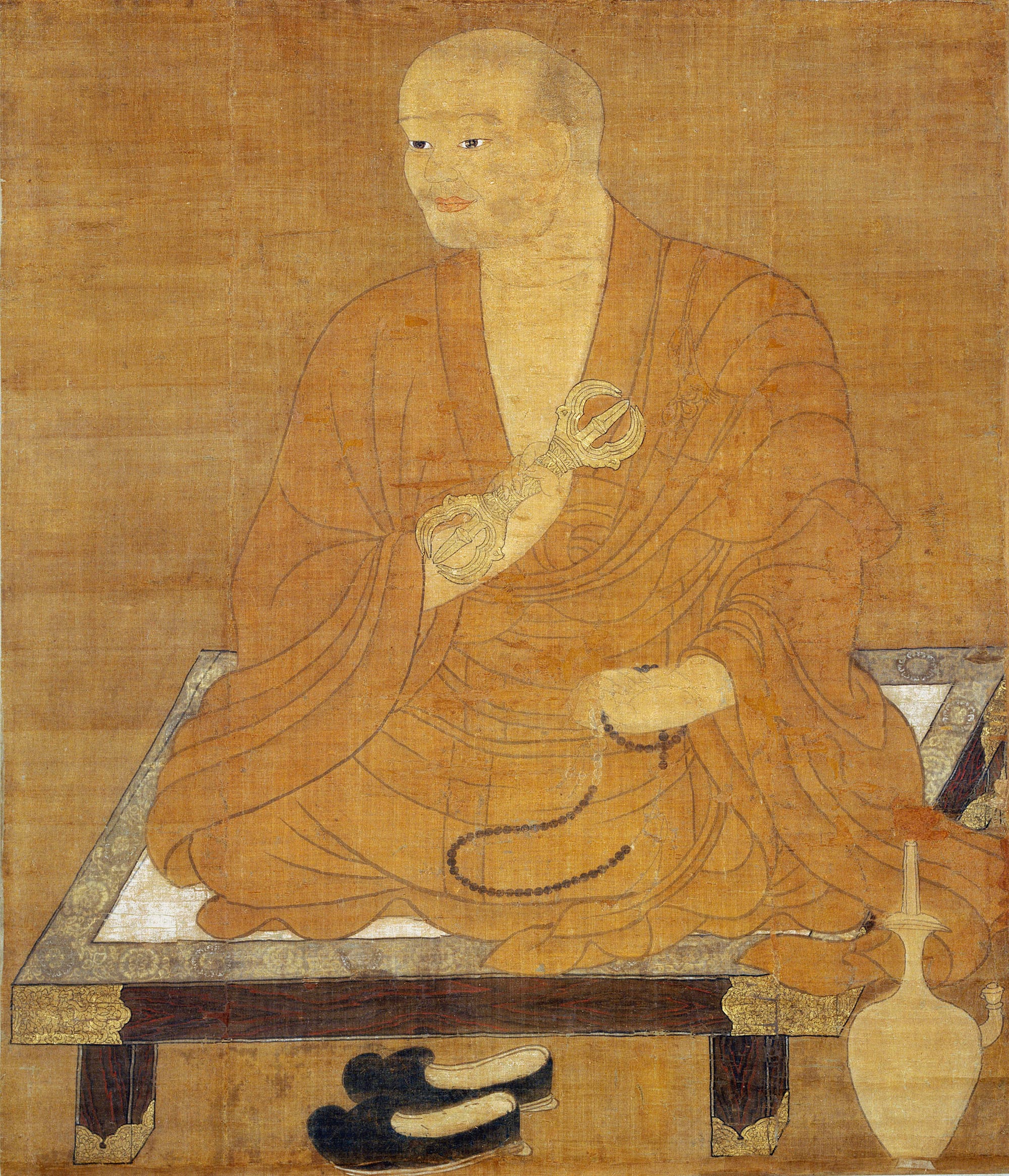
From 804-806 Kukai was a part of an envoy that went to study Buddhism in China. Lore says that he was such a genius that he finished his studies in China at a rapid pace and had gone further to India and Persia for further studying.
When he returned to Japan, he led a project to create the 88 temple pilgrimage route that wraps around the Island of Shikoku. It's been theorized that this pilgrimage route was created as spiritual protection for the Ark and its contents held at Mount Tsurugi.
Adding further to this mystery is the fact that Tokushima (徳島), the preferecture that Mount Tsurugi is in, is the only prefecture in all of Japan that has no electrical railways. Rumours have said that this is because the electromagnetic fields generated by electric trains would disturb the protection field around Mount Tsurugi.
Sharing all of this, here is more from our pilgrimage to Mount Tsurugi!
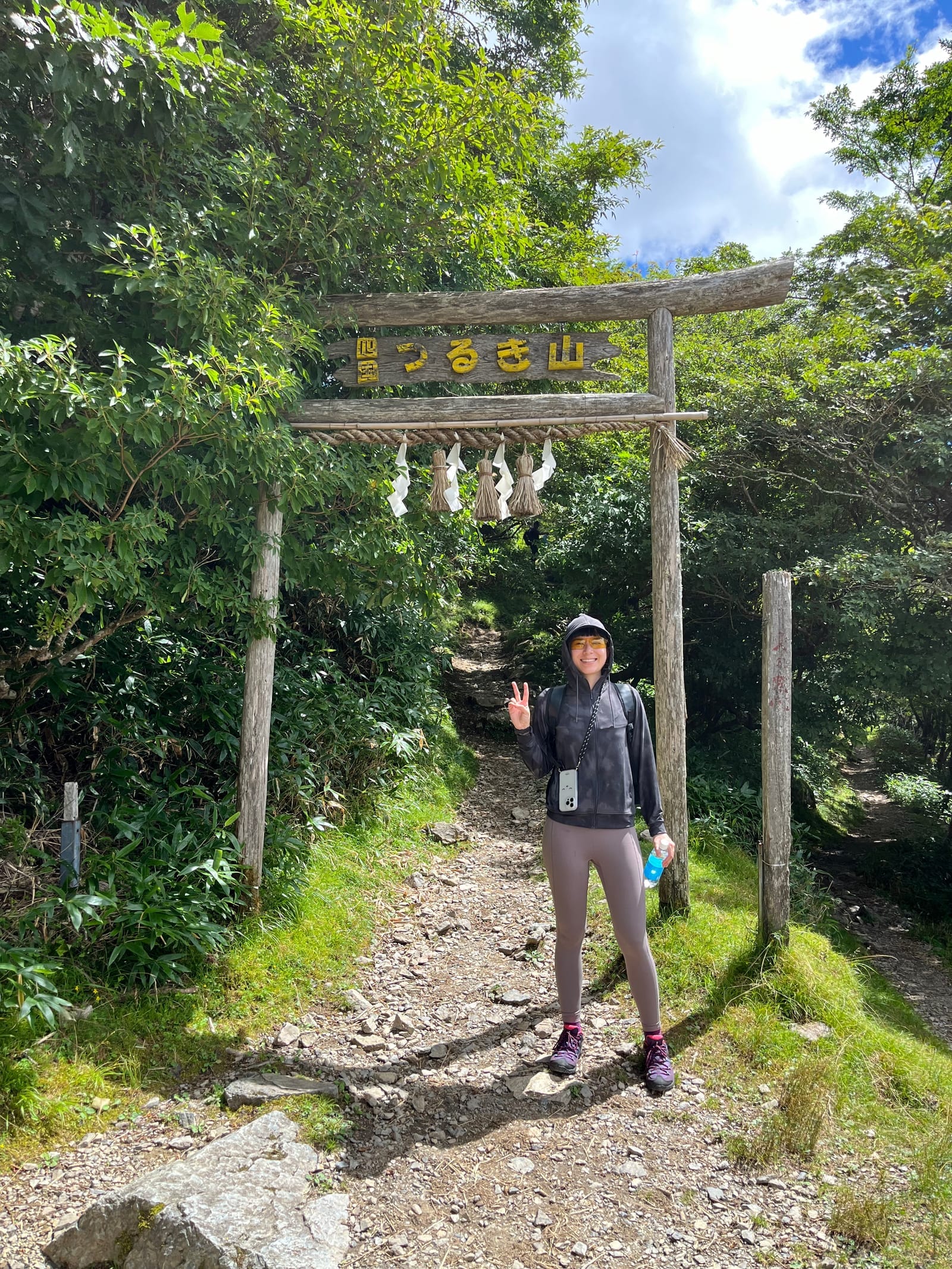
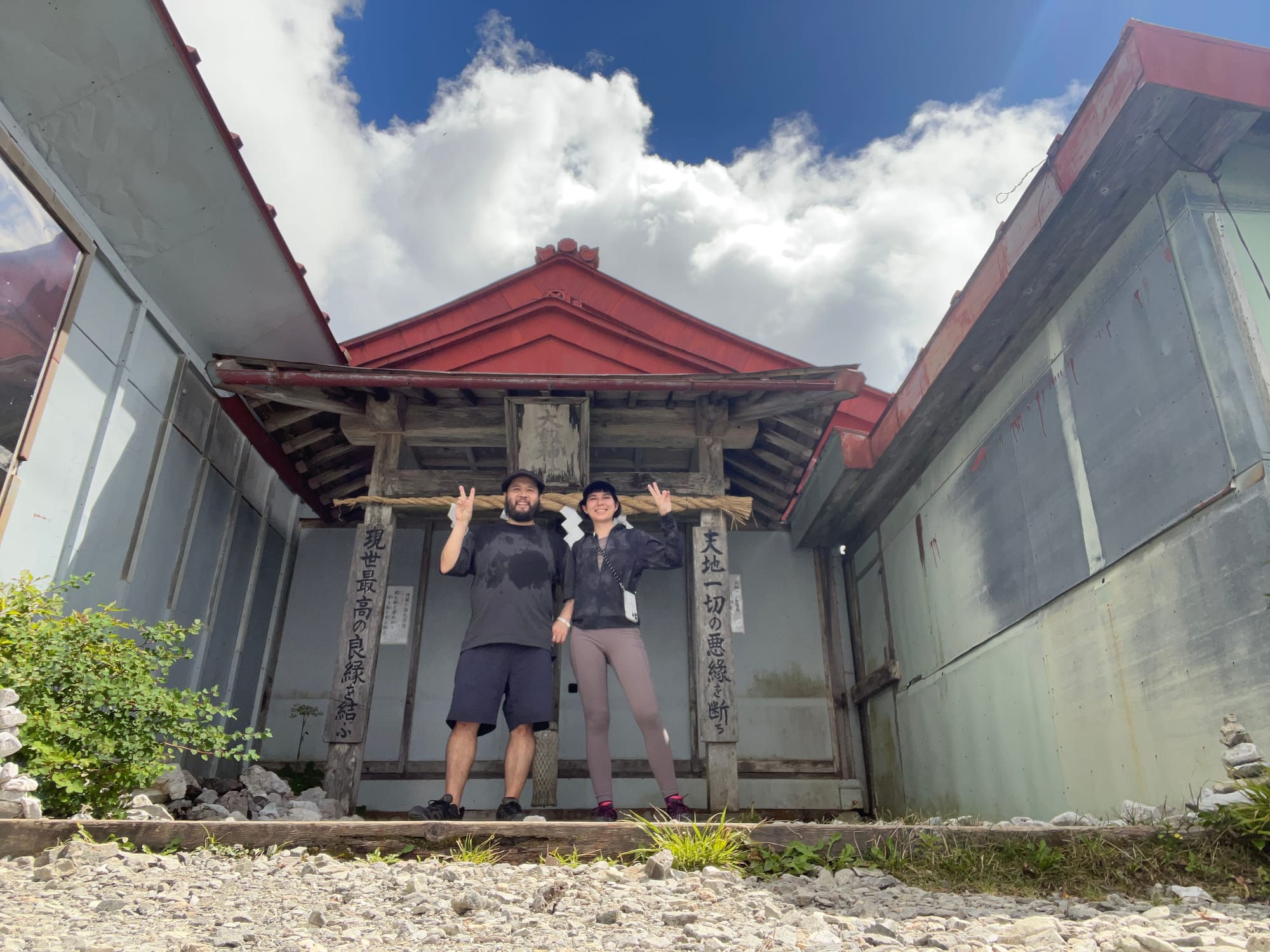
Sacred spring water just below Daiken Shrine.
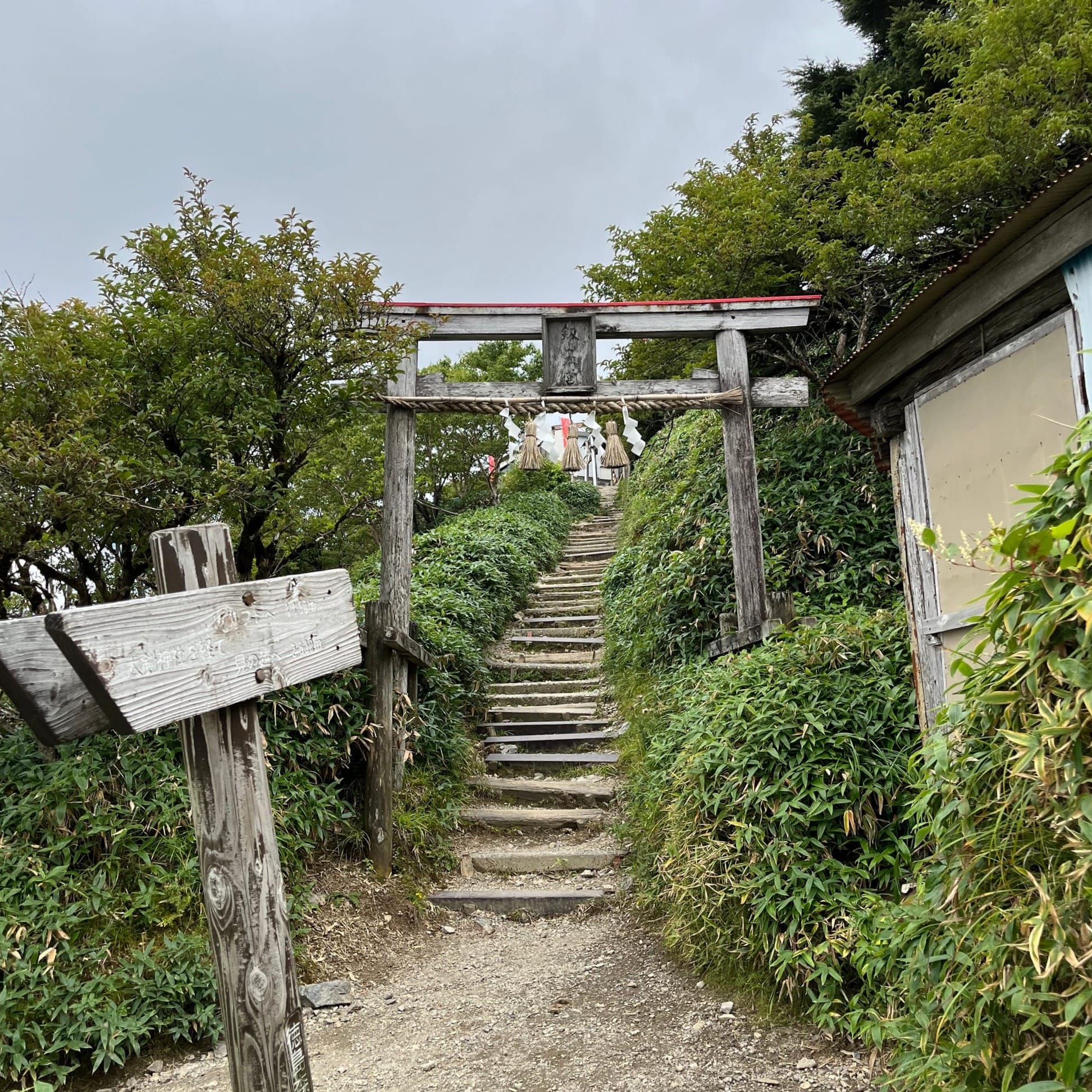
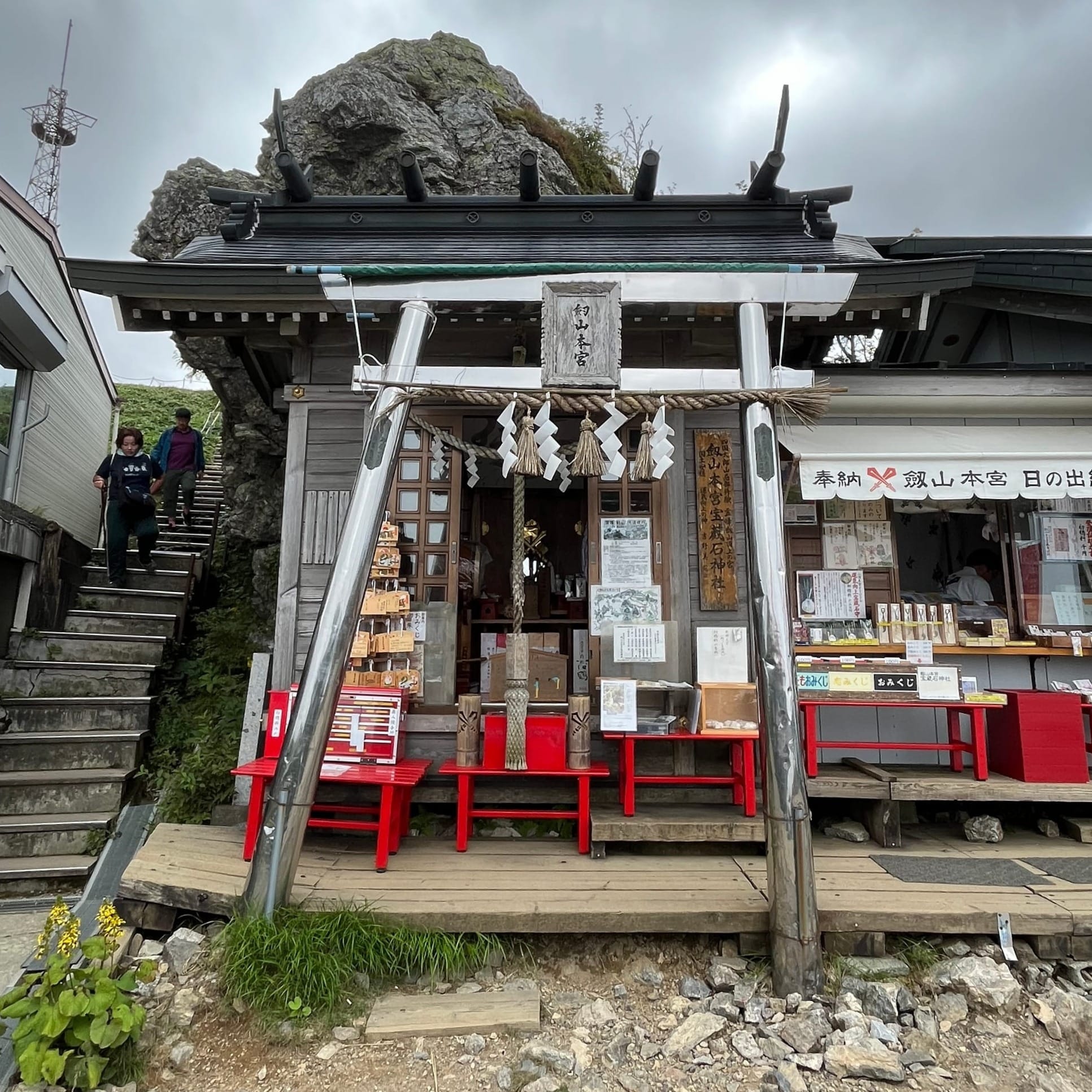
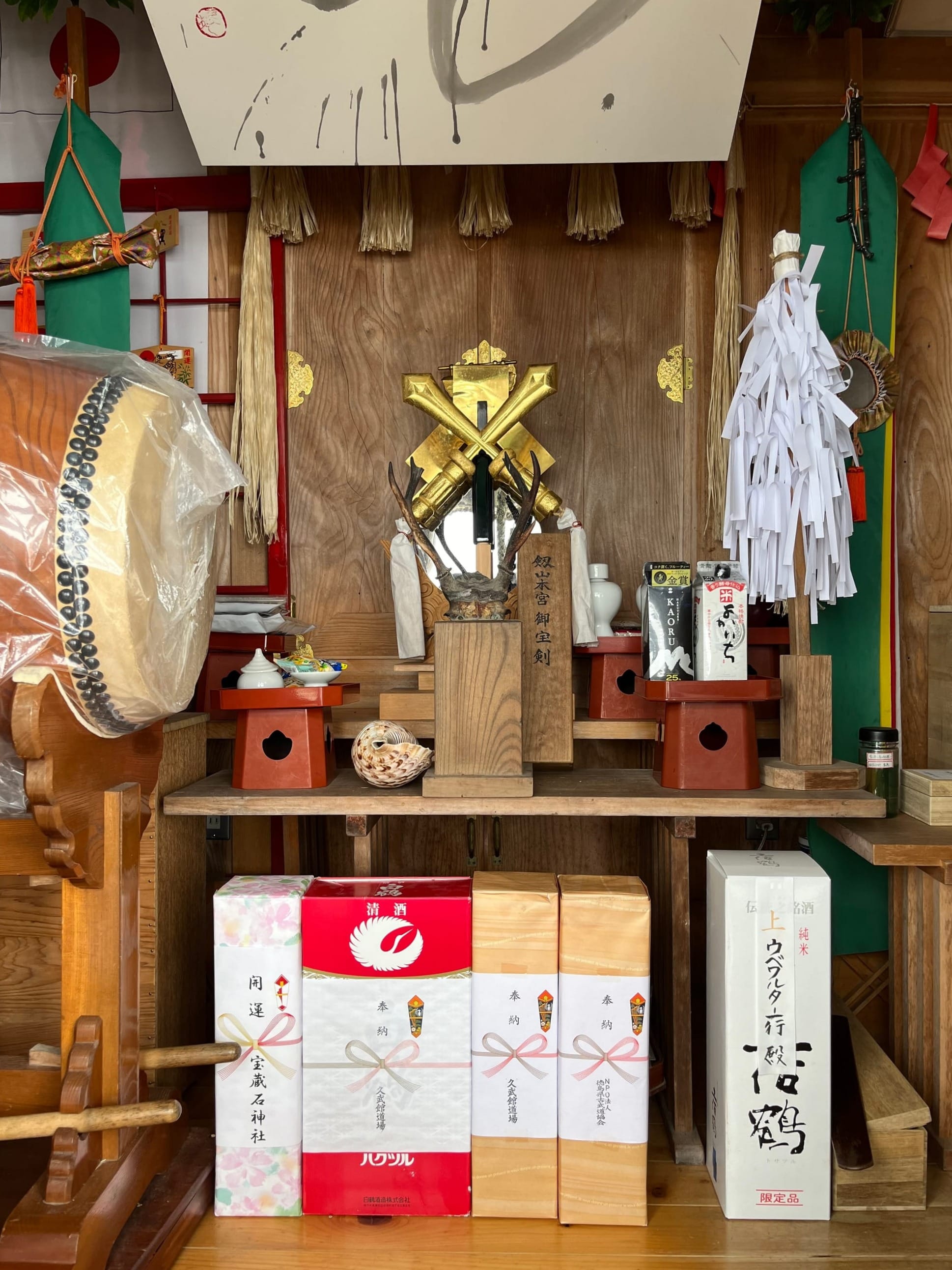
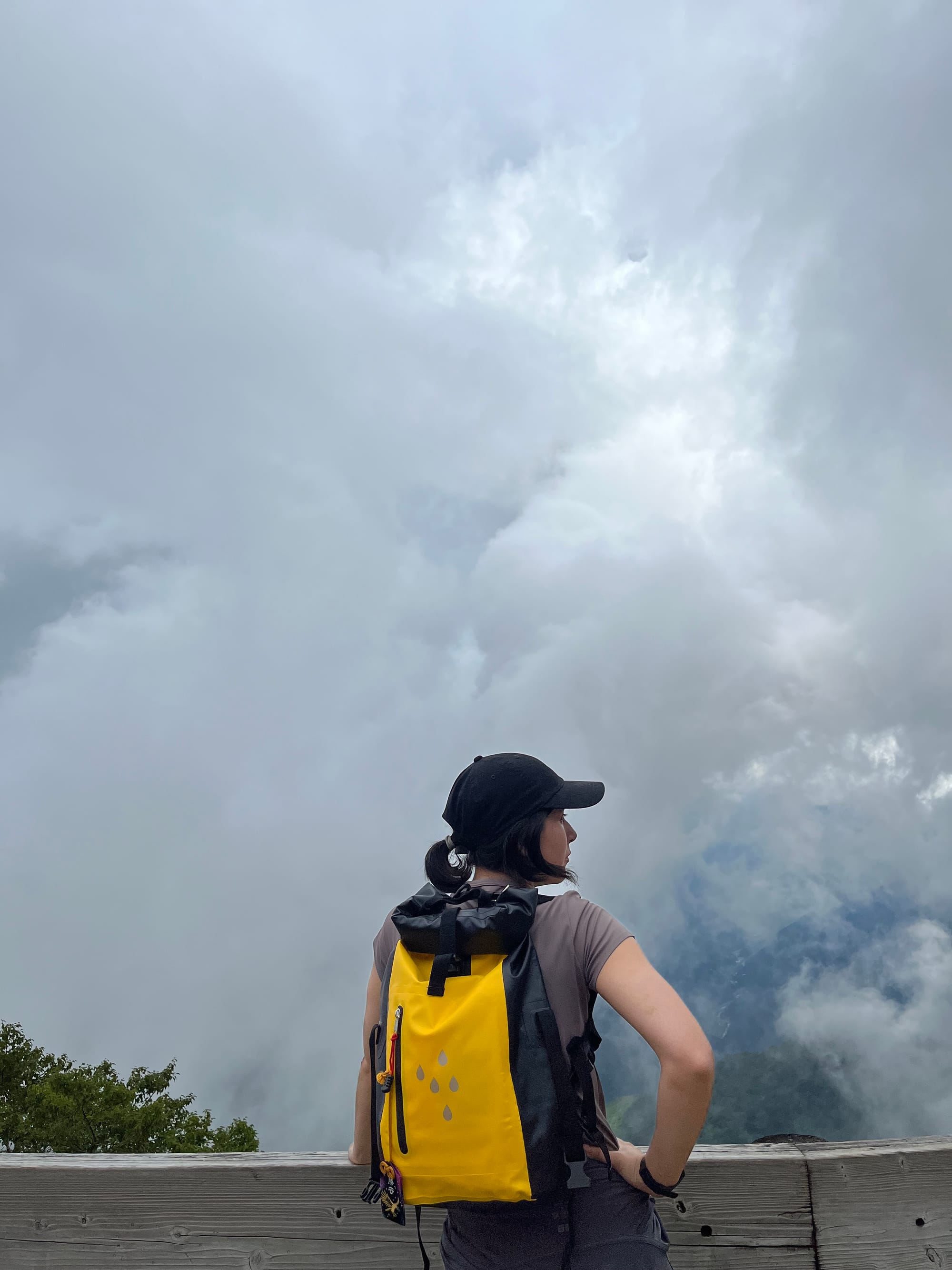
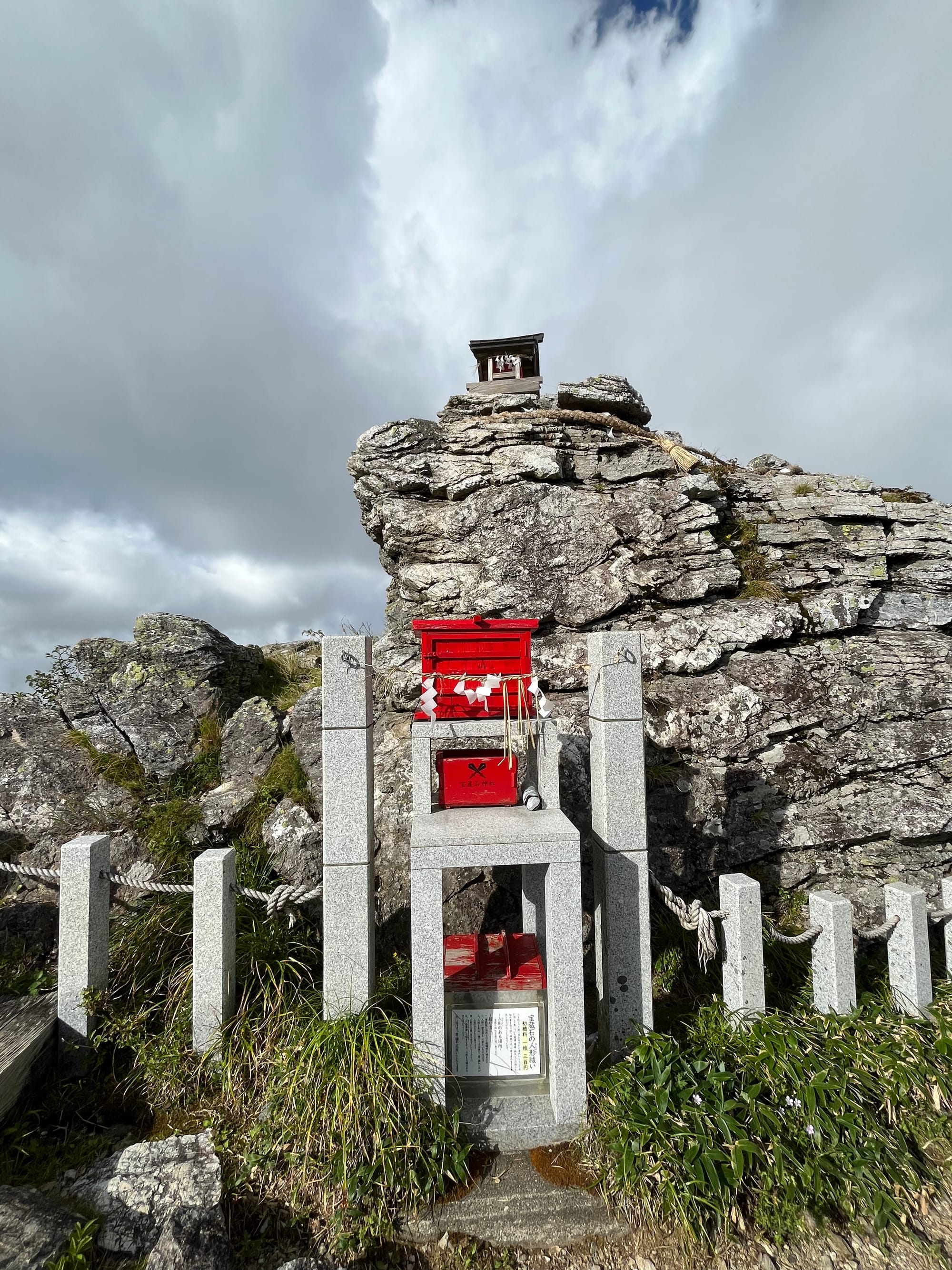
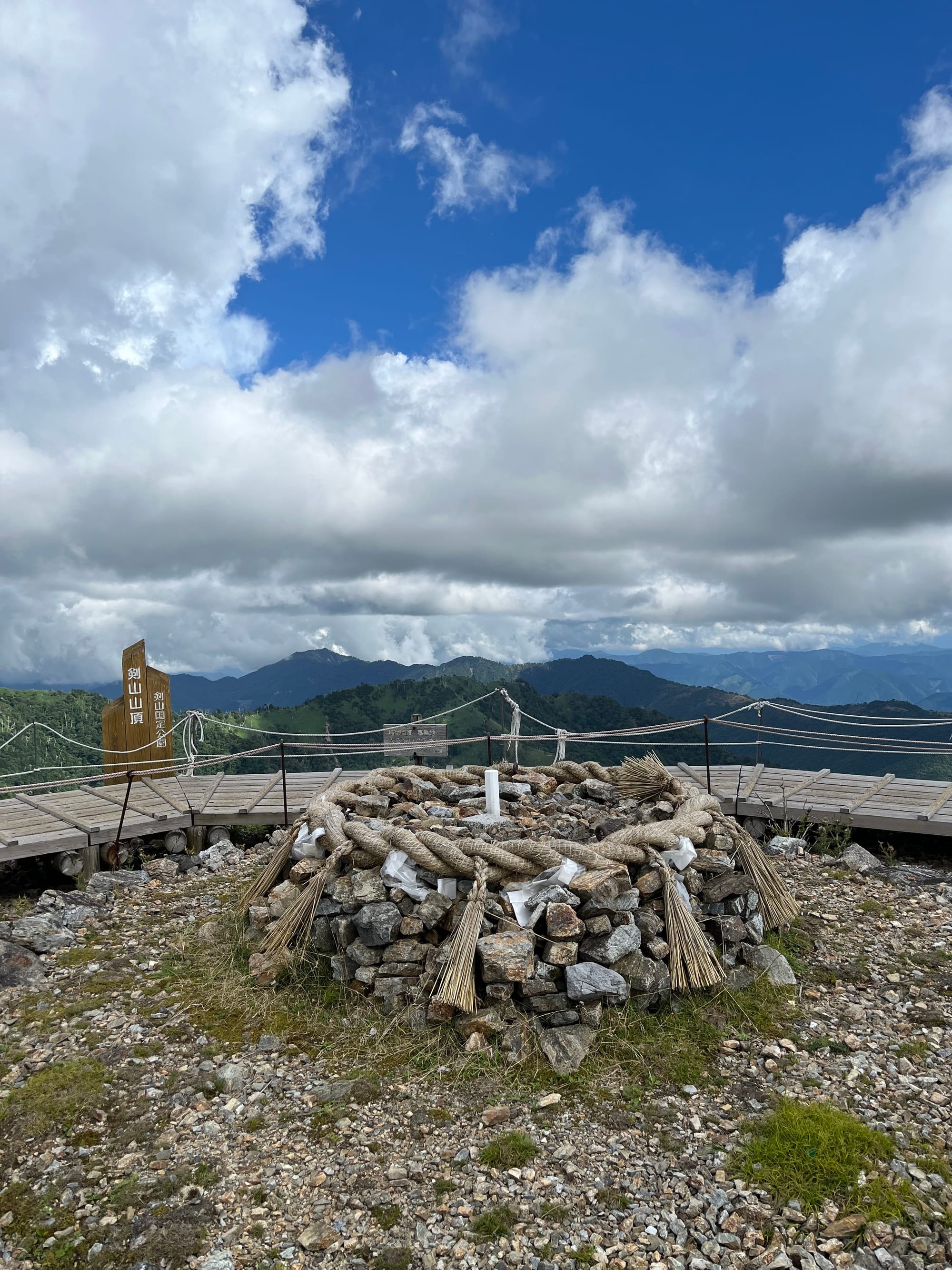
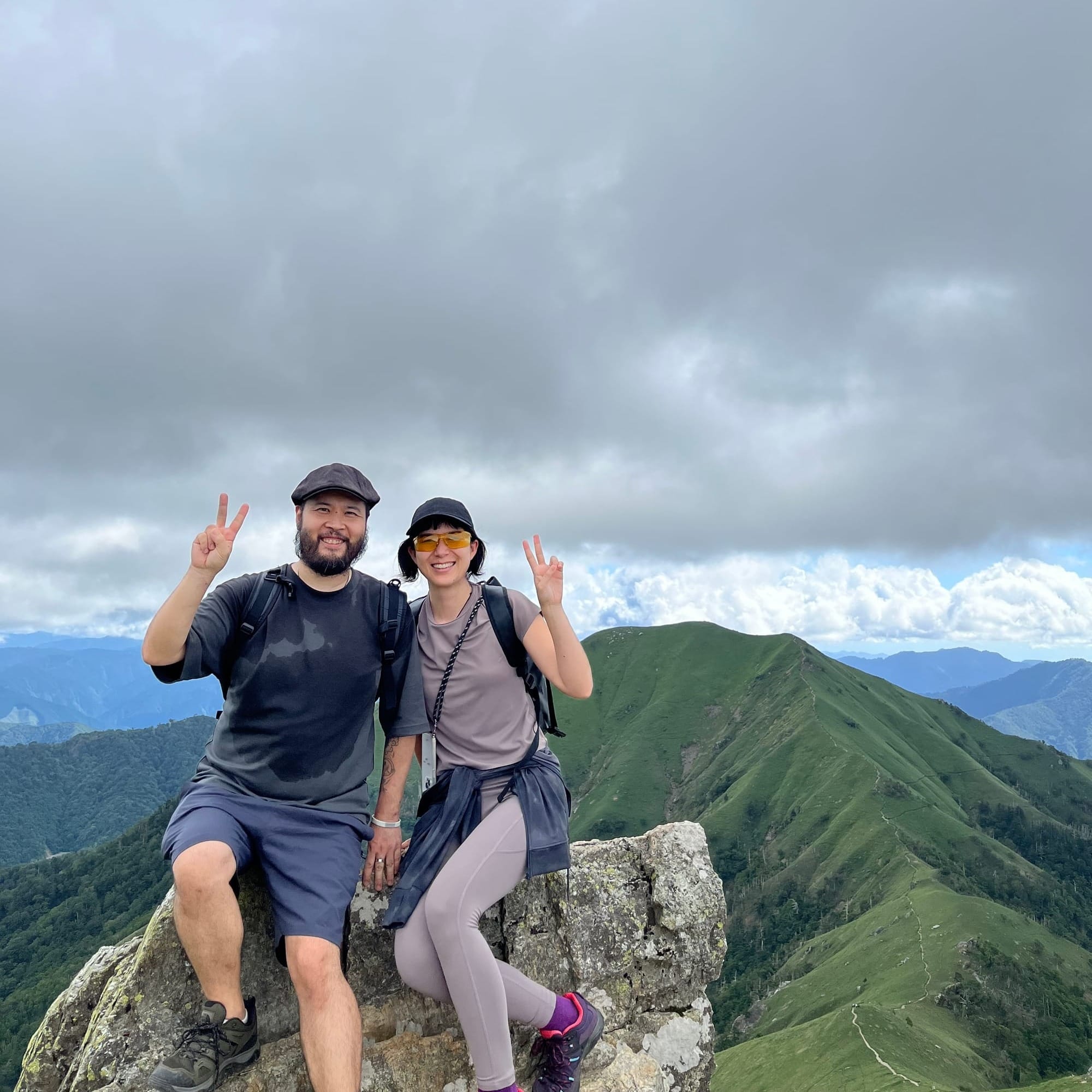
After some struggle, we found the legendary Crane Rock (鶴岩・Tsuru Iwa) and Turtle Rock (亀岩・Kame Iwa) that Masanori Takane and his son Kazunori Takane famously excavated under. Cranes (鶴・Tsuru) and Turtles (亀・Kame) respectively represent Yang and Yin within Shinto symbology. Combined together they can be read as Tsurugi (鶴亀), which also means sword (剣). Many believe that the naming of these rocks indicate that the peak of Mount Tsurugi has been specifically marked as a special place where Yang and Yin have been harmonized together.
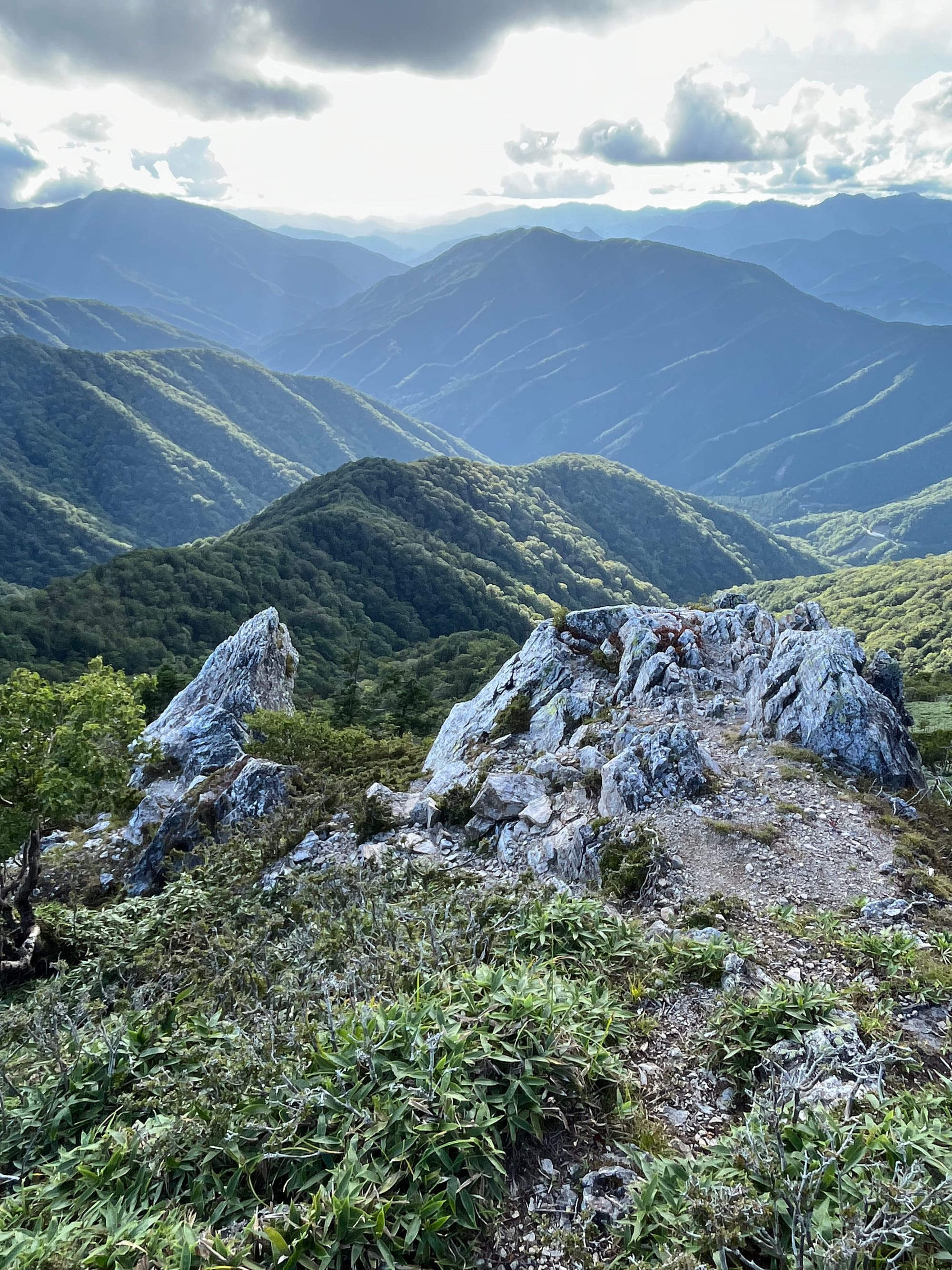
Sitting on top of the rocks, Tada saw a vision of Moses climbing Mount Sinai to receive the Ten Commandments. We felt the spiritual lust of the ancient Hebrews to head toward the highest peak they can see to be strongly psychically imprinted on to the Land. This moment dissolved many of our remaining doubts that the Lost Tribes had come to Mount Tsurugi.
It also reminded us of the historical bloody struggle between the three abrahamic religions of Judaism, Christianity, and Islam over the Dome of the Rock at the Temple Mount in Jeruslem, which continues to this day.
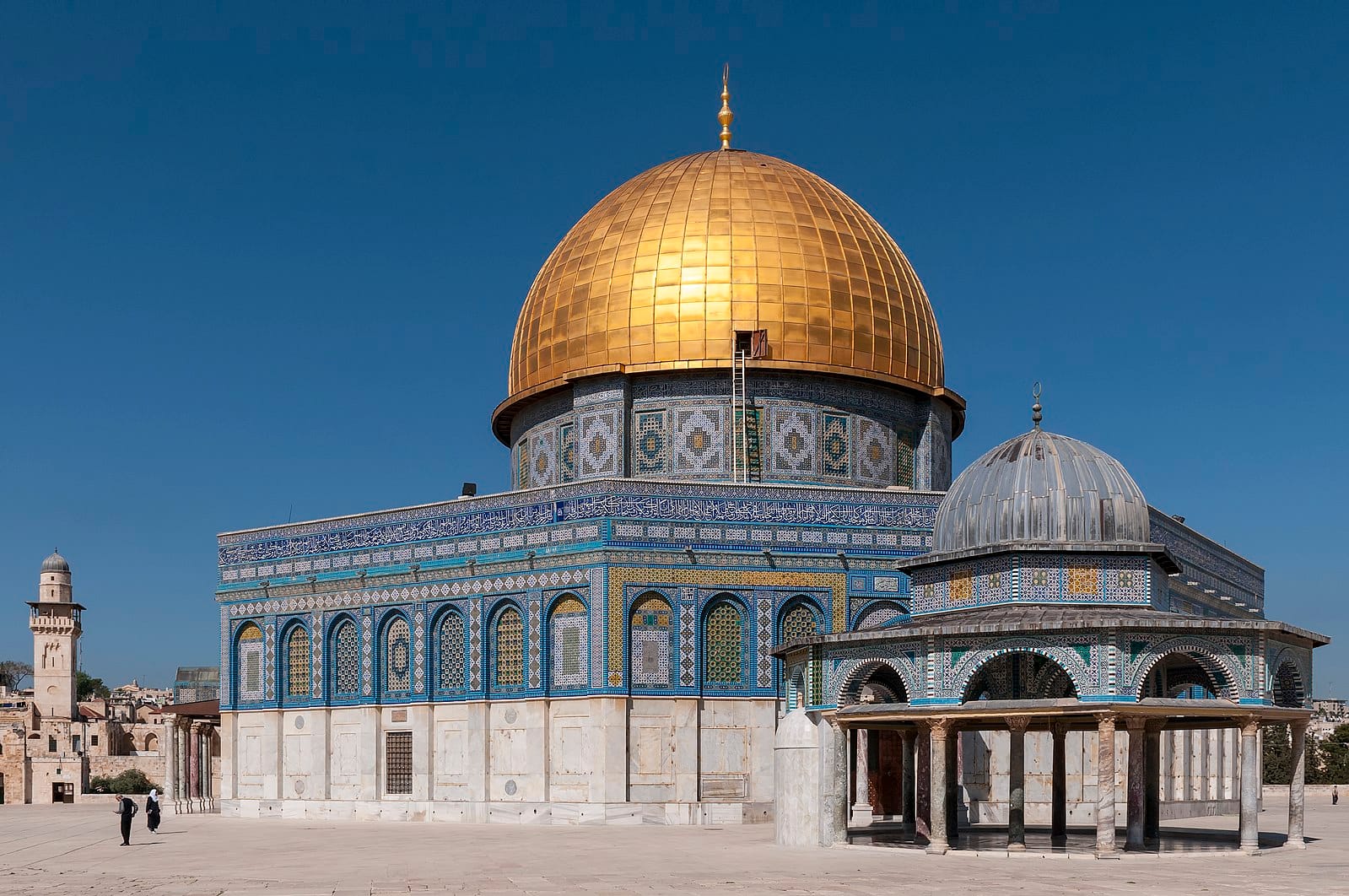

The use of large stones on mountains as sacred places to commune with the Creator is a tradition of the ancient Near East that is shared with Japan as indicated by the rock-seat (Iwakura・磐座) worship of ancient Shinto.
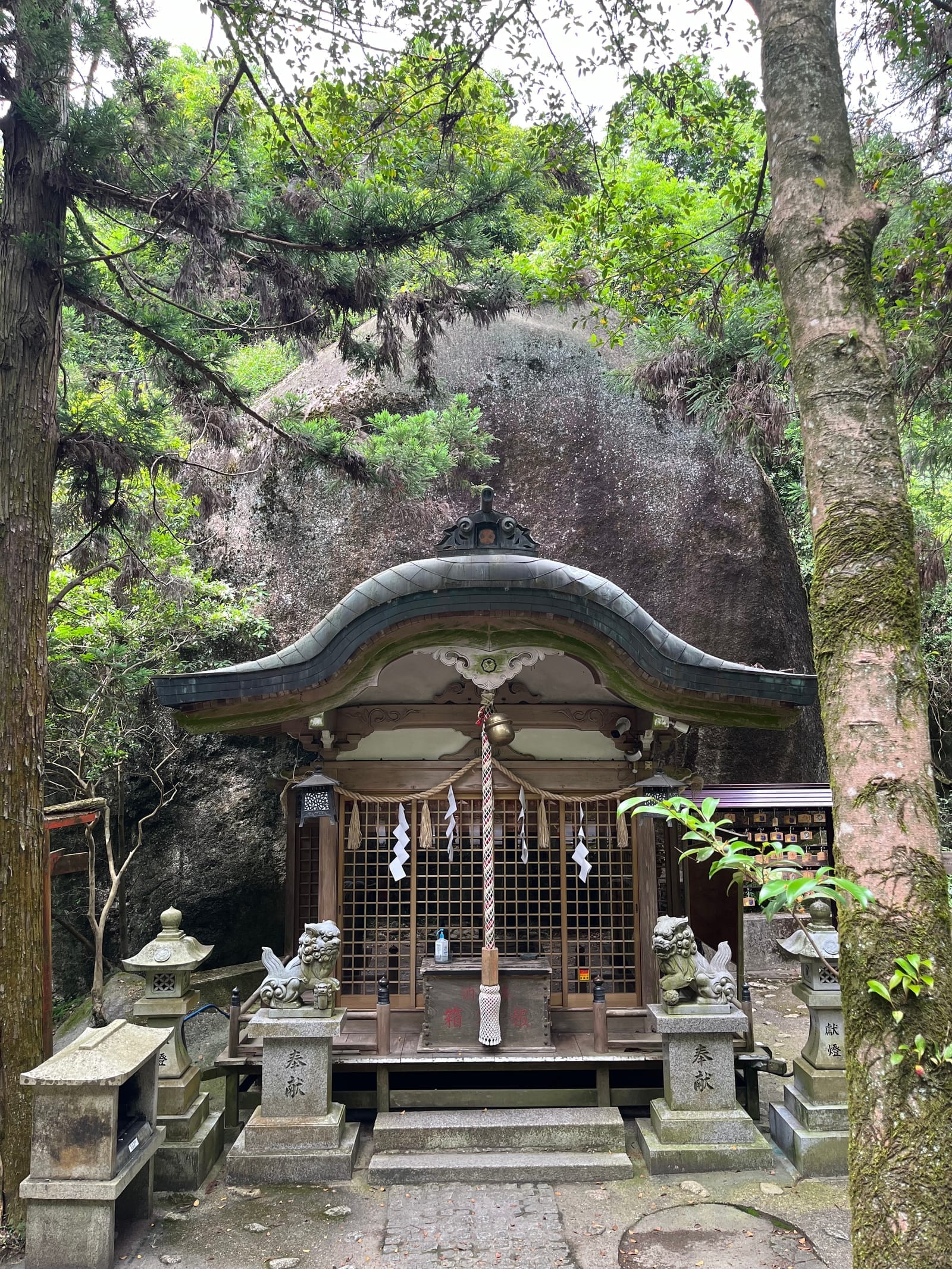
To close off our pilgrimage, Tada recited the Dragon God Prayer (龍神祝詞・Ryujin Norito) on top of the Crane Rock and Turtle Rock, wishing for peace to be brought to our troubled world.
Since our pilgrimage to Mount Tsurugi we have been digesting the reality that the seemingly outlandish theory that the Lost Tribes of Israel had migrated from the Near East to ancient Japan carrying the Ark of the Covenant, which originally inspired us to leave the West and make a new home in Japan, was in fact true. Backing this up, traces of the Ark of the Covenant and its contents can also be found throughout the cultures of the Silk Road if you look closely.
For example, the legendary founder of ancient Korea, Dangun, is said to have been given three heavenly seals of a sword, bell, and a mirror as his regalia, very similarly to the Japanese imperial regalia.
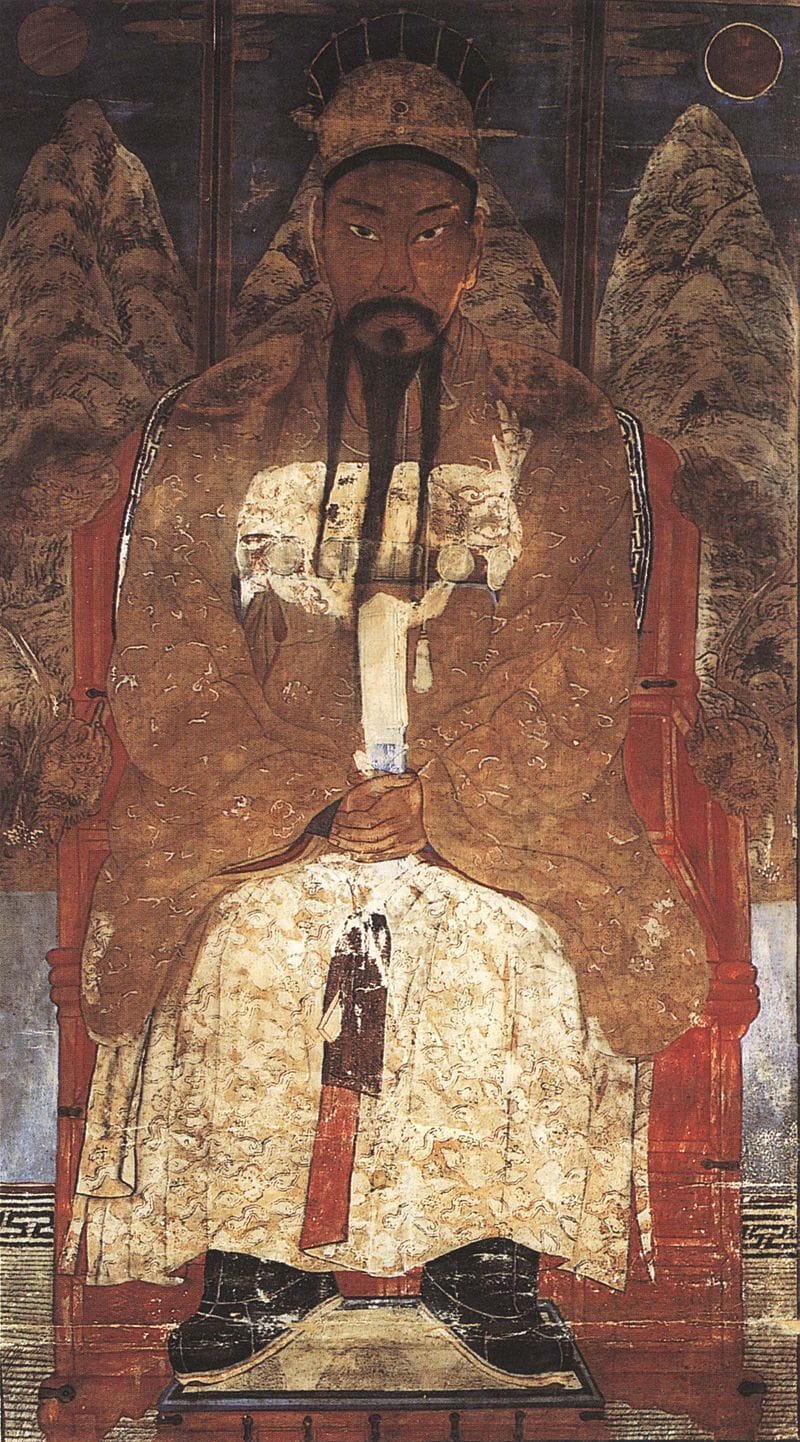
This corroborates with Japanese history as it is well known that branches of the Japanese imperial family who migrated from the Near East are known to have come through the Korean Peninsula and even founded some of its first Kingdoms.
Another example is in Taiwan where it is a folk practice of Chinese origin for gods to be carried on chariots, echoing the journey of the Ark of the Covenant through the Silk Road.
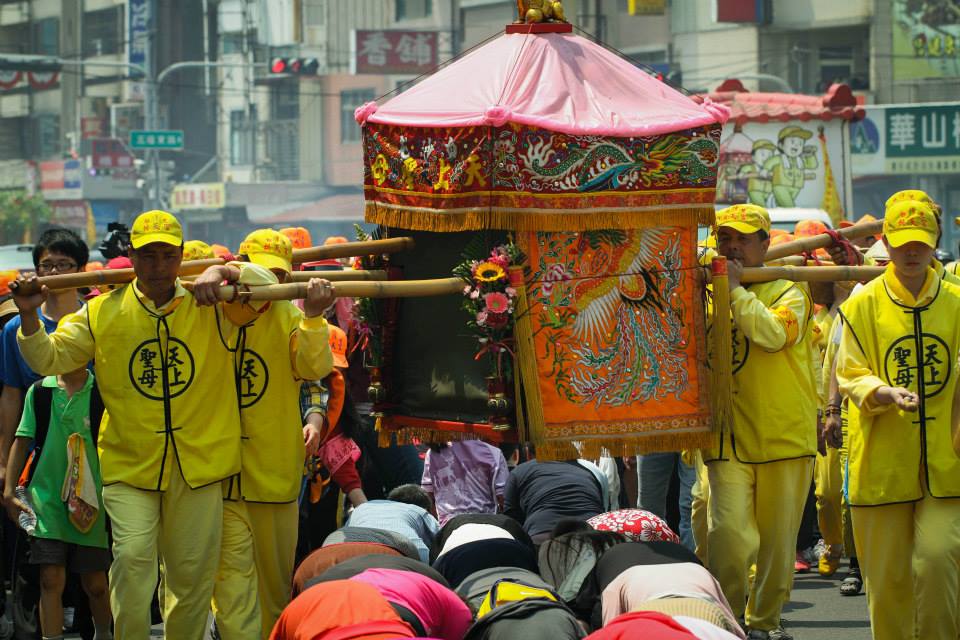
In regards to the tour path of the Ark of the Covenant in Japan, it seems to have first made its way from ancient Israel to Awa, which is the former name of the Tokushima prefectural region on Shikoku Island where Mount Tsurugi is. It was likely later brought to the ancient Japanese capital of Heiankyo (平安京), which was created By the Lost Tribes to be the new Jerusalem. During this process, the contents of the Ark were transformed into the three Japanese imperial regalia and have since been moved and hidden around the country as suggested by the "The Song of Three Treasures" from the Iya region, shared above.
This hypothetical trajectory of the Ark is substantiated by the fact that when a Japanese emperor ascends to a throne, they are required to complete a ceremony called Daijosai (大嘗祭). In this rite the new emperor must sleep under a hemp cloth woven by a virgin woman of the Miki family (三木家). The Miki family are direct descendants of the Awa Inbe clan (阿波忌部), an ancient shaman clan that originate from Awa, who are also said to be migrants of the Near East themselves. This shows us that the rural region of Awa holds a usually massive amount of spiritual authority within Shinto and the Japanese imperial system.
Further, Esoteric writer, Akio Asuka, has claimed that the Daijosai ritual is a ceremonial replaying of Yeshua's resurrection, meant to move Yeshua's spirit into a new body. This claim fits with the mysterious holes in the handprints of 96th Japanese Emperor Go-Daigo (後醍醐天皇), shown in an old document about the history of Shitenno Temple (四天王寺) in Osaka. There is speculation that the older Japanese emperors, upon receiving the Daijosai, also had to have nails put through their hands to symbolize the crucifixion.
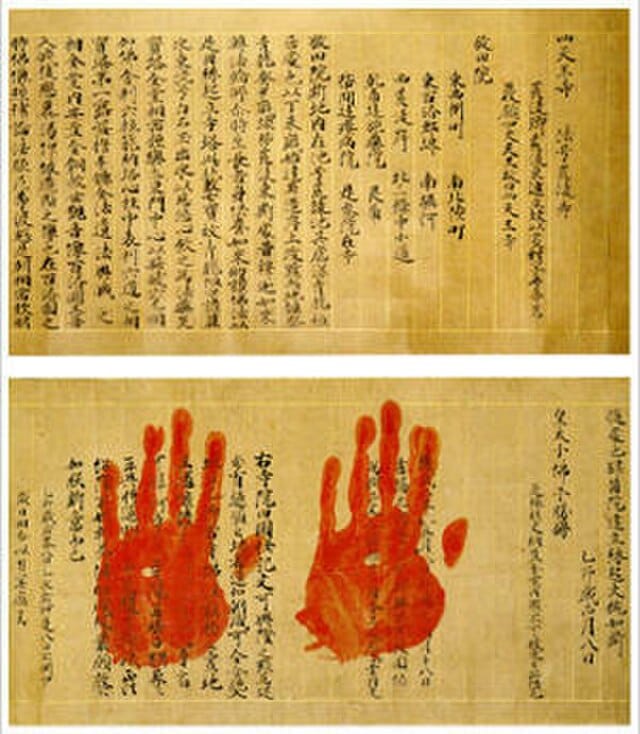
Our belief, which is also based on rumours that we have heard through networks in Japan working on the disclosure project, is that the Ark of the Covenant will be revealed to the world soon.
Two things will happen when this revelation occurs:
1) The true history of humanity will be revealed and it will become globally accepted that there have been many extremely complex decisions made over thousands of years, all in preparation for an impending calamity that has been accurately predicted since the last Great Flood, which has also inevitably led to the tragedies that we know humanity to have been plagued by. This disclosure will begin to lead humanity towards peace at last.
2) Simultaneously, it will be shown that the true Ark is within us all and it will be opened inside each and everyone of us. This will show to us the divine qualities that each one of us humans, as well as all aspects of Creation, has been born with as emanations of the Creator.
We believe that the revealing of the Ark within and without will be the transition from our current age to the next, toward the prophesied eco-AI Dragon Utopia, which we refer to as: LUNMURIA (龍夢龍愛).
Coming soon and next is the climax of our journey of uncovering the world's Dragon mysteries in Japan! Stay tuned for our pilgrimage report from the very epicenter of the disclosure movement happening in Japan: Moto Ise Kono Shrine (元伊勢 籠神社), a sacred site hereditarily maintained by the Amabe (海部) clan who officially hold the oldest family record in Japan.
If you have enjoyed following our adventure and would like to go deeper, consider joining our growing membership community that we are bringing together through our work!
Thank you for reading and hope you enjoyed!
🙏🎋🐲🔯🐦⬛🕊️🙇🏻🙇🏻♀️
Want to learn more Dragon secrets? Become a LUNMURIAN to access members only content!
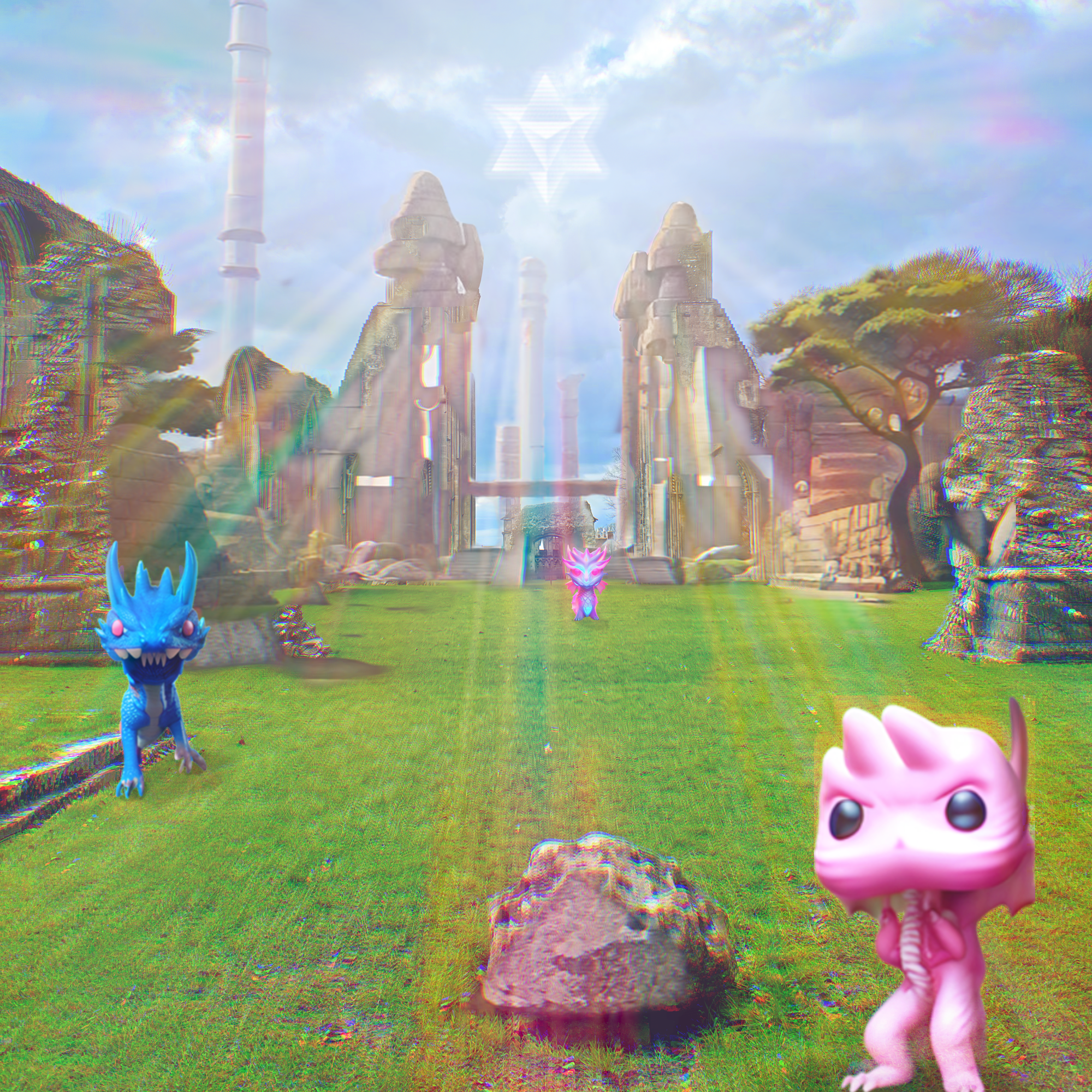
Become a member of the Order of LUNMU and ride the Dragon with us through these tumultuous times toward the coming Dragon Utopia.
List of features:
• Dragon Energy Attunement
• LUNMURIANS only content
• Video group calls
• Discussion in comments




![[Special Lecture] Healing Satanic Ritual Abuse & Animism](/content/images/size/w600/2025/12/sra-a11.jpg)